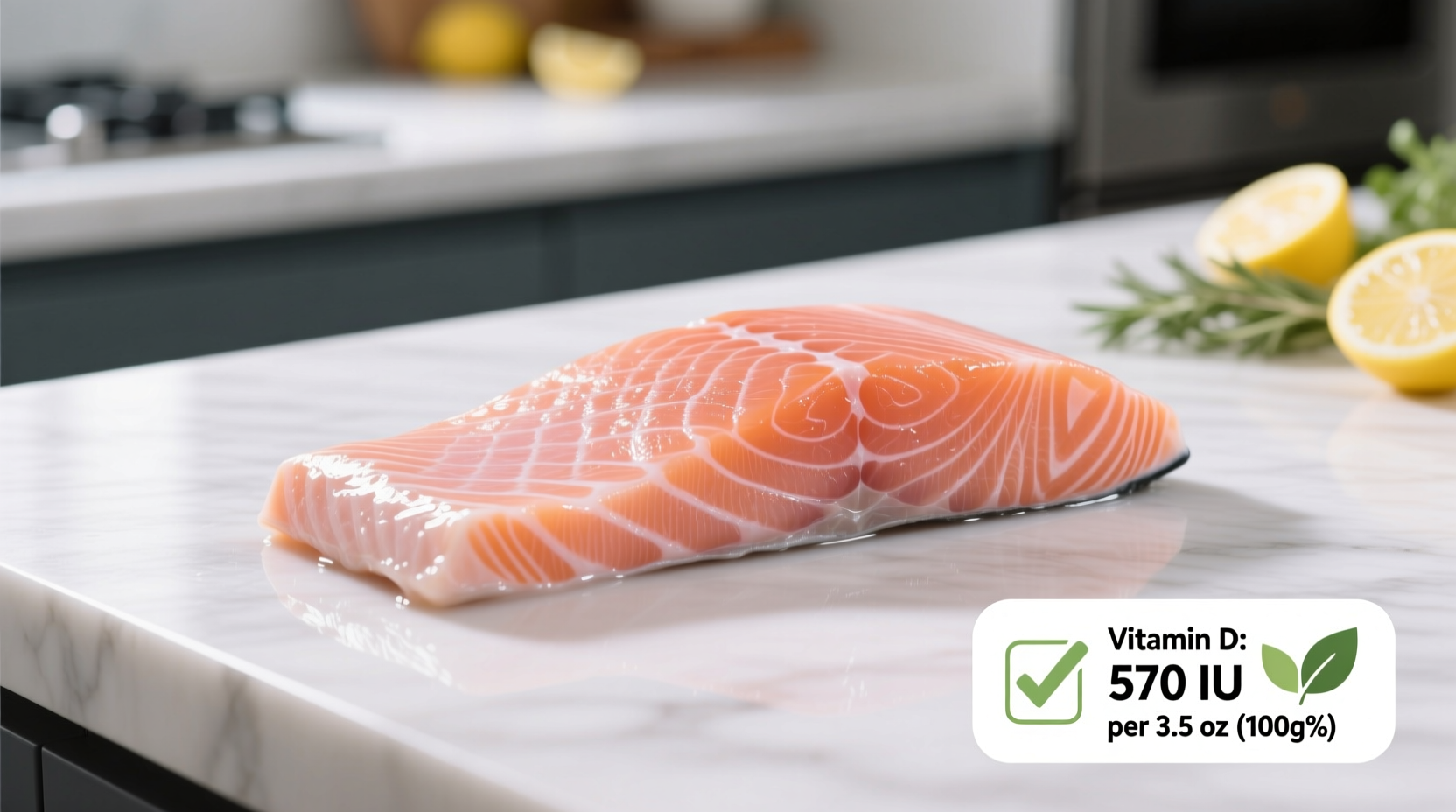Top Vitamin D-Rich Foods Ranked by Nutritional Power
When searching for what food has the most vitamin d, scientific data reveals a clear hierarchy. Based on USDA FoodData Central measurements, these foods deliver the highest concentrations of this essential nutrient per standard serving size:
| Food Source | Serving Size | Vitamin D (IU) | % Daily Value |
|---|---|---|---|
| Cod liver oil | 1 tablespoon (14g) | 13,600 | 170% |
| Wild-caught salmon | 3 ounces (85g) | 570-1,000 | 71-125% |
| Mackerel | 3 ounces (85g) | 388-645 | 49-81% |
| Sardines (canned) | 3 ounces (85g) | 231-272 | 29-34% |
| Egg yolks (free-range) | 1 large (17g) | 37-42 | 5-6% |
| Mushrooms (UV-exposed) | 3 ounces (85g) | 400-2,300 | 50-288% |
This vitamin d food comparison chart shows why cod liver oil stands apart as nature's most concentrated source. While fish and mushrooms provide valuable dietary options, their vitamin D content varies significantly based on species, preparation methods, and growing conditions. For example, wild-caught salmon contains up to four times more vitamin D than farmed varieties due to natural feeding behaviors.

Why Vitamin D Matters for Your Health
Vitamin D isn't just another nutrient—it functions as a hormone critical for calcium absorption, immune function, and inflammation reduction. According to the National Institutes of Health, approximately 41.6% of American adults have vitamin D deficiency, with higher rates among people with darker skin tones and those living in northern latitudes. This widespread deficiency makes understanding which food contains highest vitamin d essential for maintaining bone density and reducing chronic disease risks.
Unlike most nutrients, vitamin D can be synthesized through sun exposure. However, modern lifestyles often limit this natural production. The Endocrine Society notes that 15-30 minutes of midday sun exposure on arms and legs produces about 10,000-20,000 IU of vitamin D—but this varies dramatically based on skin pigmentation, geographic location, and season. During winter months above 37° latitude, the sun's angle prevents sufficient vitamin D synthesis regardless of exposure time.
Maximizing Vitamin D Absorption from Food
Simply consuming vitamin D-rich foods isn't enough—your body needs fat to properly absorb this fat-soluble vitamin. Research published in the American Journal of Clinical Nutrition demonstrates that adding healthy fats to vitamin D sources increases absorption by 32%. Try these practical strategies:
- Pair grilled salmon with avocado slices or olive oil dressing
- Include a small handful of nuts with your vitamin D-fortified cereal
- Cook mushrooms in coconut oil to enhance their vitamin D bioavailability
- Choose full-fat dairy products over skim versions for fortified options
Vegans face unique challenges in finding plant-based foods highest in vitamin d. While mushrooms exposed to UV light provide the best natural option, their vitamin D2 content is less potent than the D3 found in animal sources. Consider fortified plant milks and cereals, but check labels carefully as amounts vary widely between brands.
Vitamin D Through the Ages: Changing Recommendations
Our understanding of vitamin D requirements has evolved significantly. In the 1930s, the primary concern was preventing rickets, leading to milk fortification programs. Today's research reveals broader implications:
- 1941: First official Recommended Dietary Allowance (RDA) established at 400 IU
- 1997: RDA maintained despite growing evidence of wider health benefits
- 2010: Institute of Medicine increased RDA to 600 IU for adults
- 2020s: Many researchers now suggest 1,500-2,000 IU daily for optimal health
This vitamin d recommendation timeline reflects our deepening understanding of this nutrient's role beyond bone health. Current research from Harvard Medical School indicates that maintaining blood levels above 30 ng/mL may reduce respiratory infection risks by 12% and improve immune response to vaccinations.
When Food Isn't Enough: Supplementation Considerations
Even with careful dietary planning, many people struggle to reach optimal vitamin D levels through food alone. The Mayo Clinic recommends considering supplements if:
- You live above 37° latitude (north of Atlanta)
- You regularly use sunscreen with SPF 15+
- You have darker skin pigmentation
- You're over 65 years old
When selecting supplements, look for vitamin D3 (cholecalciferol) rather than D2 (ergocalciferol), as studies show D3 raises blood levels 87% more effectively. Always pair with vitamin K2 to ensure proper calcium distribution. Consult your healthcare provider before starting high-dose supplementation, as excessive intake can cause hypercalcemia.
Practical Vitamin D Meal Planning
Building a vitamin D-rich diet requires strategic planning. Here's how to incorporate the top vitamin d food sources into your weekly menu:
- Breakfast: Scrambled eggs with UV-exposed mushrooms (200 IU)
- Lunch: Canned sardines on whole-grain toast with olive oil (300 IU)
- Dinner: 4-ounce wild salmon portion with roasted vegetables (700 IU)
This sample day provides approximately 1,200 IU of vitamin D—nearly double what most adults get from typical diets. For those with limited fish consumption, fortified orange juice (100 IU per cup) and vitamin D-enhanced yogurt (80 IU per serving) offer valuable alternatives.











 浙公网安备
33010002000092号
浙公网安备
33010002000092号 浙B2-20120091-4
浙B2-20120091-4